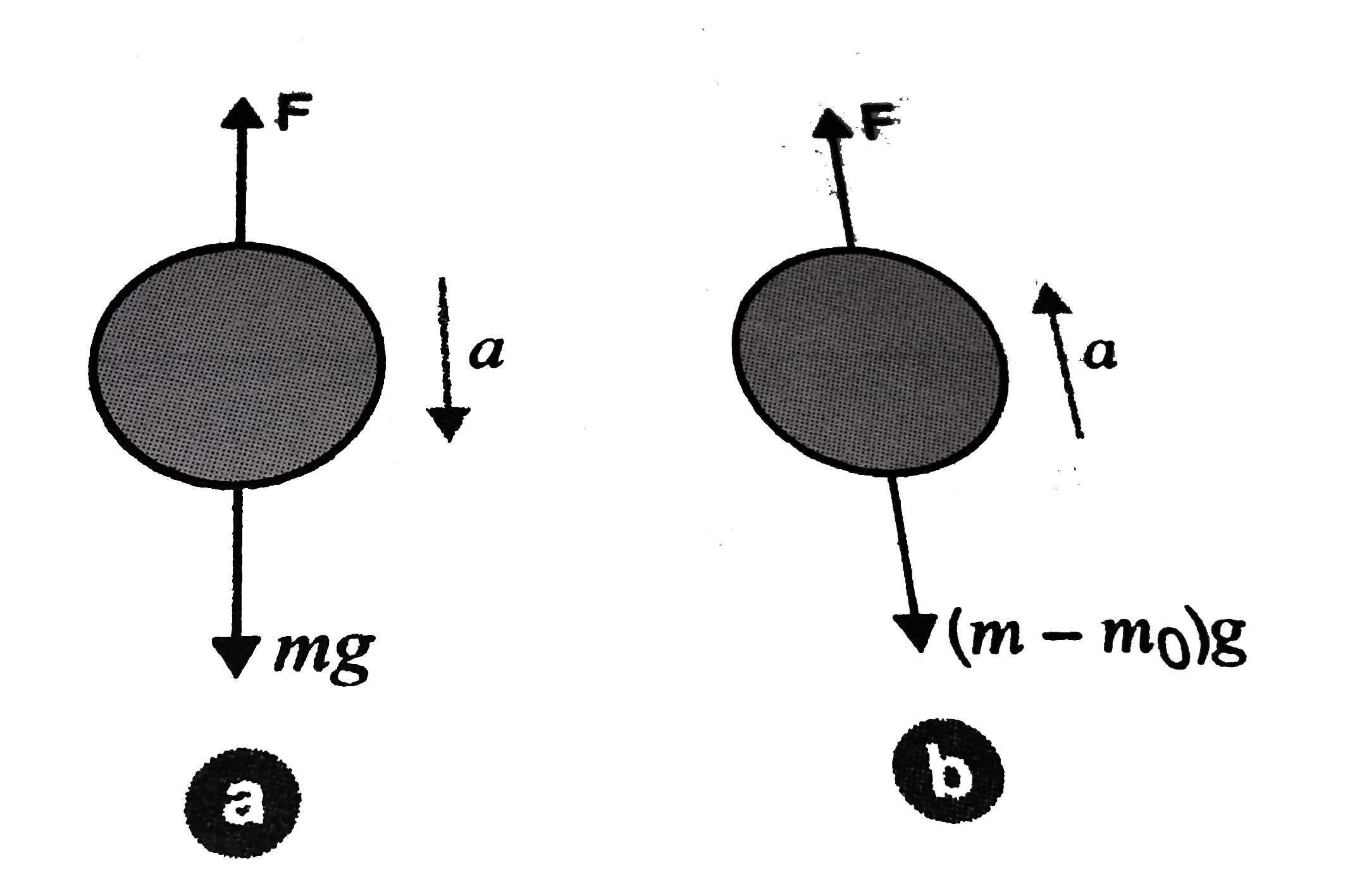A balloon with mass m is descending down with an acceleration a (wherea<g) . How much mass should be removed from it so that it starts moving up with an acceleration a?
2mag+a
2mag−a
mag+a
mag−a
The correct Answer is:a
Let F be the upthrust on balloon due to air
Case (i) When balloon is descending down with
acceleration a then as shown in
mg−F=ma
Case (ii) Let m0 be the mass removed from the ballon then balloon moves upwards with acceleration
Now F−(m−m0)g=(m−m0) a ..(ii)
Adding (i) and (ii) we get
mg−(m−m0)g=ma+(m−m0)a
Solving it we get m0=2mag+a
 .
.
Topper's Solved these Questions
- LAWS OF MOTIONBOOK - PRADEEPCHAPTER - LAWS OF MOTIONEXERCISE - Integer Type Questions
7 Videos
- LAWS OF MOTIONBOOK - PRADEEPCHAPTER - LAWS OF MOTIONEXERCISE - Assertion- Reason Type Questions
17 Videos
- LAWS OF MOTIONBOOK - PRADEEPCHAPTER - LAWS OF MOTIONEXERCISE - Problems for practice
112 Videos
- KINEMATICSBOOK - PRADEEPCHAPTER - KINEMATICSEXERCISE - 1 NCERT Comprehension
4 Videos
- MATHEMATICAL TOOLSBOOK - PRADEEPCHAPTER - MATHEMATICAL TOOLSEXERCISE - Fill in the blanks
5 Videos
Similar Questions
A balloon with mass m is descending down with an acceleration a (wherea<g) . How much mass should be removed from it so that it starts moving up with an acceleration a?
View SolutionA balloon of mass m is descending down with an g/2 acceleration How much mass should be removed from it so that it starts moving up with same acceleration
View Solution
Knowledge Check
A balloon with mass m is descending down with an acceleration a where a
A2mag+aB2mag−aCmag−aDmag−aA balloon of mass m is rising up with an acceleration a.
AThe upthrust on the balloon is m(g+a).BThe upthrust on the balloon is ma.Cma/(2a+g) mass must be detached in order to double its acceleration.Dm/2 mass must be detached in order to double its acceleration.A balloon of mass M and a fixed size starts coming down with an acceleration f(fltg). The ballast mass m to be dropped from the ballon to have it go up with an acceleration f. Assuming negligible air resistance is find the value of m
A(Mg+f)fBMf2(g+f)C(2Mfg+f)Dm(g+a)g
A balloon of mass m is descending down with an acceleration How much mass should be g2 removed from it so that it starts moving up with same acceleration?
View SolutionA balloon with mass m is descending down with an acceleration a (wherea<g) . How much mass should be removed from it so that it starts moving up with an acceleration a?
View SolutionA balloon carring some sand is moving down with a constant acceleration a0. How much mass of sand should be removed, so that the balloon move up with same acceleration?
View SolutionA balloon of mass M is descending at a constant acceleration α. When a mass m is released from the balloon it starts rising with the same acceleration α Assuming that its volume does not change what is the value of m. ?
View SolutionA balloon of mass M is descending at a constant acceleration α. When a mass m is released from the balloon it starts rising with the same acceleration α . Assuming that its volume does not change, what is the value of m?
View Solution
